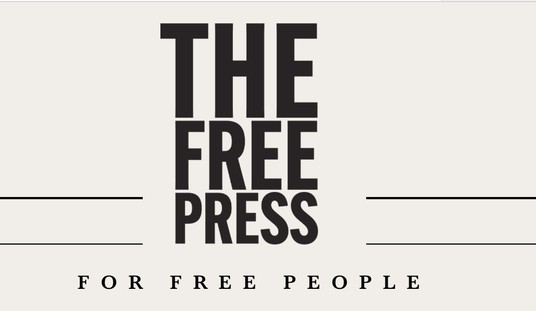This result is so outlandish that the pollster opens the analysis of its own poll by noting that even Pennsylvania voters don’t really believe it. “Despite the challenger’s poll lead, voters are evenly divided on who they think will win the Keystone State’s electoral votes this year as a majority believe that their communities hold a number of ‘secret Trump voters,'” writes Monmouth. Americans remember only too well how badly the polls missed in the Rust Belt states that ended up handing Trump the presidency in 2016.
Here’s a weird but true fact, though: They didn’t miss by that much in Pennsylvania. Check out the final two and a half weeks of polling in PA in 2016 in reverse chronological order below. Except for that lone six-point lead for Hillary by Morning Call, the state was essentially a toss-up after Comey’s letter about reopening Emailgate appeared on October 28.

In the end the poll average missed by less than three points. With another week of polling, others may have detected the late break towards Trump that only Trafalgar picked up. As it is, the myth of a massive polling error in PA in 2016 is just that, a myth. (The myth of a massive polling error in Wisconsin is … less of a myth.)
Today the RCP average has Biden ahead by 7.8 points in the state thanks in part to this new one from Monmouth, which has the race 53/40 for the Democrat. It’s an outlier, but not as crazy of an outlier as you might think. The NYT/Siena poll found Biden up 10 points in PA a month ago.
Biden is in a relatively stronger position among his fellow Democrats (93% to 1%) than Trump is among Republican voters (84% to 12%). Biden also enjoys a wide margin among independent voters (54% to 33%).
Biden has the advantage among voters under 50 years old (60% to 29%) as well as voters age 65 and older (52% to 42%). Trump has an edge among voters between 50 and 64 years old (56% to 43%). White voters without a college degree also prefer the incumbent (55% to 39%) while the challenger leads among white college graduates (61% to 34%) and voters who are Black, Hispanic, Asian or from other racial groups (76% to 16%)…
A weak spot for the president is his handling of the coronavirus outbreak. Just 42% of registered voters say he has done a good job while 56% say he has done a bad job. By contrast, Pennsylvania Gov. Tom Wolf, a Democrat, earns praise on this issue – 67% say he has done a good job and just 29% say he has done a bad job…
Overall, 40% of Pennsylvania voters have a favorable opinion of Trump and 54% have an unfavorable one – including 47% very unfavorable. His opponent, Biden, gets a 45% favorable to 47% unfavorable rating, including 32% very unfavorable.
Lotta familiar polling trends there. Coronavirus is a major drag on Trump, Biden does much better among senior citizens than Democrats typically do, and the public just doesn’t dislike Sleepy Joe as much as it did Crooked Hillary. Note the partisan splits too. The president likes to randomly tweet at times that he has a 96 percent approval rating within the Republican Party (he did it again this morning) but he never provides a source for that and, in any case, it’s not translating into rock-solid GOP support in head-to-head polling so far. It’s Biden, not Trump, who’s consolidated his party — although it might be more accurate to say that Trump has done a better job consolidating Democrats than he has Republicans.

In Monmouth’s poll, Dems are almost unanimously behind Biden (93/1) whereas Trump is seeing double-digit defections among GOPers (84/12). Meanwhile, independents favor the Democrats by more than 20 points. If you’re winning swing voters *and* you’re doing a better job of holding your base than the other guy is, by definition you’re winning. That’s the simplest possible take on Biden’s lead right now.
The silver lining for POTUS is that this is a poll of registered voters and the race tightens once you start screening for likely voters. The wrinkle is that it didn’t tighten enough to become competitive when Monmouth applied two different turnout models for likely voters to its results. In its “low turnout” model, Biden leads by seven; in the “high turnout” model, he leads by 10. It’s very hard to imagine turnout being low this fall unless we’re trapped in an unholy second wave of the pandemic, and even then I don’t think either side would be significantly deterred. They’re going to have their say on Trump, come what may.
And no, says NYT data guy Nate Cohn, Monmouth didn’t get a “bad sample” here:
Not that you should judge polls this way, but surely the poll unskewers will be disappointed to learn that this sample is even by Party ID and Trump+5 on recalled vote
— Nate Cohn (@Nate_Cohn) July 15, 2020
One other data point to back up Monmouth’s findings. Change Research has been conducting polls of the six major battleground states since the beginning of March and found Trump ahead of Biden in many of them through the end of May. Since then, though, there’s been a shift towards the Democrat coinciding with the rise of new COVID outbreaks in the Sun Belt and California. In its latest polling published this morning, they find Biden ahead by a range of six to eight points in Arizona, Florida, Michigan, Pennsylvania, and Wisconsin, with the only tight race coming in North Carolina (Biden leads by one there). Biden’s lone eight-point lead comes in PA, the state where he was born; Change’s sample is one of likely voters, so that fits right within the range of outcomes that Monmouth is seeing right now in its own likely-voter screens. Even Trafalgar, which has become famous for detecting stronger Trump support than other pollsters, had Biden up five points in Pennsylvania recently. If Team Trump ends up pulling out of any single Rust Belt state this fall in order to focus its resources elsewhere (including and especially Florida), it’ll end up being this one.








